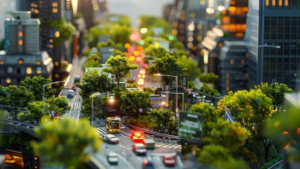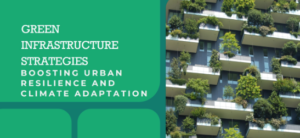
Art World Technology Innovations : Introduction
There has never been more vibrant junction of technology and art. Technical developments keep changing the way artists create, disseminate, and market their work as we negotiate the twenty-first century. From digital canvases to virtual reality shows, the developments in this field are not only improving artistic expression but also increasing artistic availability. The most recent technological developments in the art industry will be discussed in this post together with their effects on viewers, collectors, and artists.
The Growth of Digital Art
Accepting Digital Media Tools
Over the last two decades, digital art has become somewhat well-known. Software and digital tools are becoming more and more used by artists to produce amazing images once only feasible with conventional media. Programs like Adobe Photoshop, Procreate, and Corel Painter let creators explore colors, textures, and forms in ways unthinkable just a few years ago.
NFTs’ Function:
Non-Fungible Tokens (NFTs) are among the most innovative developments in the art scene. NFTs have transformed digital art ownership, purchase, and sale. NFTs help artists to sell their work in a safe and verifiable way by offering a distinctive digital certificate of ownership. This helps artists financially as well as lets collectors confidently invest in digital art.
Case Studies of Rising Digital Artists
Many musicians have effectively moved to digital channels, becoming well-known and financially successful. To show the promise of this new media, digital artist Beeple sold an NFT for $69 million. Likewise, other artists have pushed the boundaries of conventional art forms by finding their specialty in designing digital graphics, animations, and even virtual installations.
Virtualreality and augmented reality
Changing the Creative Experience
Technologies related to augmented reality (AR) and virtual reality (VR) are changing audience experience of art. These technologies enable viewers to interact with artworks in immersive ways, therefore increasing the accessibility and appeal of art. AR can, for instance, overlay digital images onto physical artworks to improve the viewing experience by adding further background or information.
Virtual Showrooms and Galleries
Many museums and galleries responded to the worldwide epidemic by including VR to present virtual exhibits. By allowing guests to investigate art collections from the comfort of their homes, these online sites help to break geographic boundaries. Virtual tours starting at institutions like the Louvre and the British Museum let viewers all over value their treasures.
Creating Immersion Art Installations
AR and VR are being used by artists in more and more frequency. Interactive projects let visitors enter the artwork, therefore forging a closer emotional connection. For instance, Olafur Eliasson’s immersive events let people interact with the surroundings, so fusing technology with art.
Artificial Intelligence in Entertainment
How Artificial Intelligence Affects Creativity
In the arts, artificial intelligence is causing waves and questioning established ideas of innovation. AI systems can create pieces of art, help with the creative process, and even examine past art. For example, neural networks are used by sites like DeepArt and ArtBreeder to generate amazing images depending on user inputs.
Cooperation among Artists and AI
Some musicians are using artificial intelligence as a cooperative tool rather than a substitute. Working with artificial intelligence, they can push the boundaries of their artistic practice and investigate fresh creative paths. Many times, this cooperation produces creative works combining algorithmic accuracy with human intuition.

Ethical Concerns
AI begs ethical issues even if it offers fascinating prospects. Who owns an artificial intelligence made artwork? In what ways do we value human artists’ efforts over those of machines? As we negotiate the changing terrain of art and technology, these considerations are absolutely vital.
Blockchain Technology in Art Guaranturing Provenance and Authenticity
Blockchain technology presents a transparent and safe way to confirm artworks’ authenticity and provenance. Blockchain guarantees that art collectors may track the ownership history of a piece by means of distributed ledger recording of every transaction, therefore lowering the risk of forgery.
Advocating Artists
By allowing artists to sell their work straight to collectors, therefore avoiding conventional middlemen like galleries, blockchain can empower creators. By means of this direct-to–consumer approach, artists can keep control over their work and keep a bigger portion of the earnings.
Obstacles and Restraints
Blockchain technology has difficulties even if its benefits are great. Environmental issues have been raised by the energy usage connected with bitcoin transactions. Furthermore, the technology is still somewhat new, hence many artists do not have the technical skills needed to negotiate it successfully.
Social Media and artistic expression
An Additional Platform for Creatives
Social media has changed the way musicians interact with audiences and advertise their work. Artists can highlight their portfolios, reveal their creative process, and interact with fans on sites like Instagram and TikHub. By means of this democratization of art, new artists can establish a following and be visible without depending on established galleries.
Art as a Sensation Virally
Social media also enables art to go viral. With a single post, artists can attract millions of people, therefore generating possibilities for cooperation and publicity. On platforms like TikHub, the phenomena of “art challenges” motivates artists and viewers to be creative and involved, therefore strengthening the feeling of community between them.
The Effect on Literary Review
Social media alters the field of art critique even while it offers advantages. Sometimes the fast speed of internet participation obscures careful criticism, which results in an emphasis on trends instead of content. This change calls for a review of how we approach digital age art critique.
Art and Technology: The Future
Forecasts for the forthcoming decade
It is obvious from looking ahead that technology will keep influencing the art scene. Further developments in AI, AR, VR, and blockchain will open fresh doors for collectors and artists. Combining technology with art will probably result in whole fresh genres and modes of expression.
The Function of Knowledge
Art education has to develop if we are ready for these shifts. Technology should be included into courses at institutions so that students could learn how to properly use digital tools and platforms. This will guarantee that the following generation of musicians is ready to flourish in a world going more and more technologically advanced.
Involvement in Communities
Community involvement will always be crucial even as technology finds increasing presence in the art scene. Institutions and artists should work to establish inclusive environments that support involvement and communication. We can create a rich and varied art ecology by strengthening ties among audiences, collectors, and artists.
Finally
Finally, artistic technological breakthroughs are changing our methods of production, experience, and appreciation of art. From digital media to blockchain technology, these developments present fascinating opportunities for audiences and artists equally. It is imperative to keep aware of the ethical consequences and give community involvement top priority as we keep investigating this junction of art and technology. With the correct tools and viewpoints, we can build a more inclusive and dynamic art environment and bright future for art.
Let us welcome these breakthroughs as we progress and respect the ageless worth of creativity and human expression. We are all invited to travel with the art world as it is about to change.